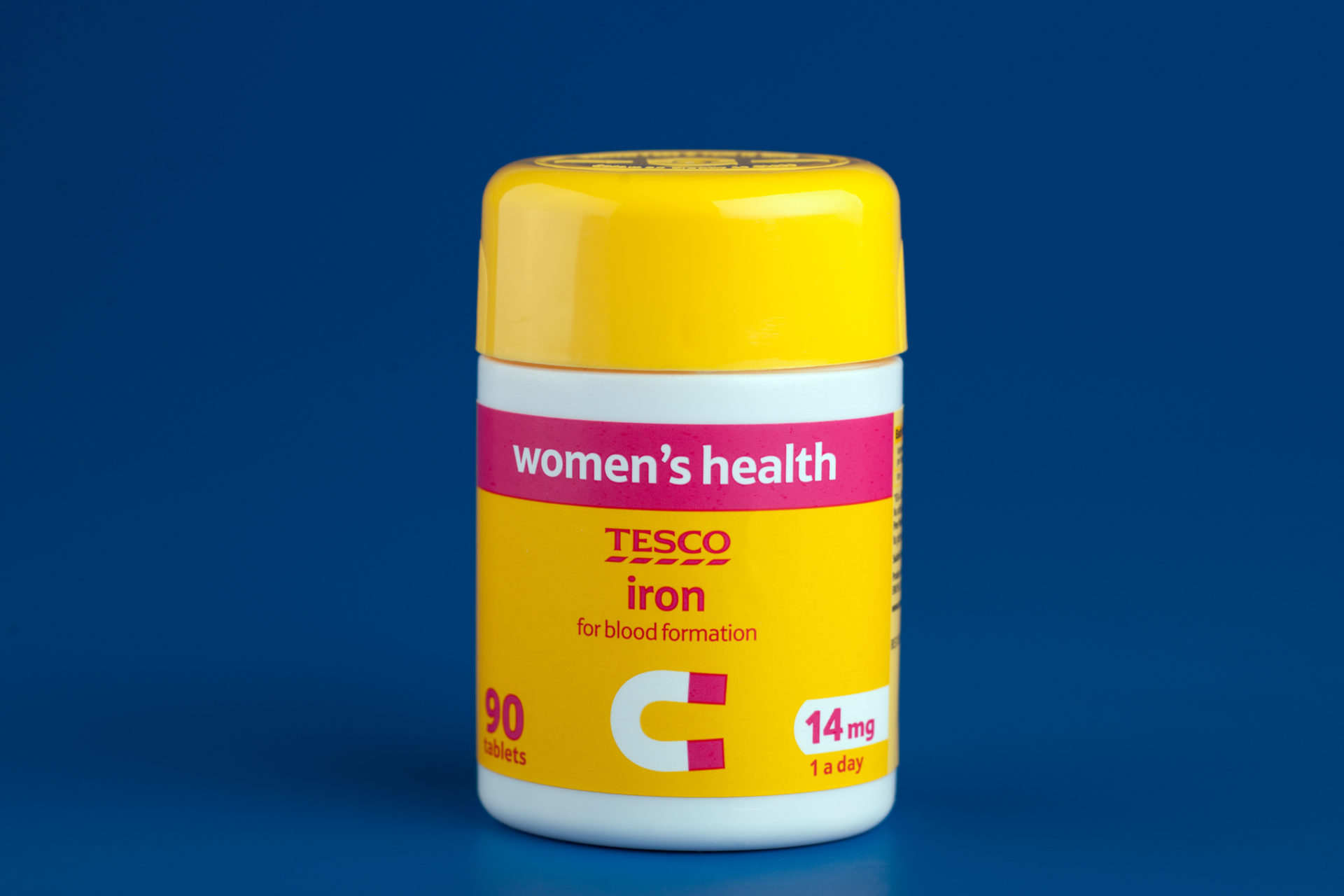The DJ Calvin Harris has shared images of his wife’s placenta encapsulation to his nine million followers on Instagram, in the aftermath of their son’s birth.
But are there any real benefits to consuming this often-misunderstood organ?
Dublin-based Doula Krysia Lynch said that research shows the placenta is a great source of minerals and other chemicals that mothers may have depleted during pregnancy.
“The key benefit they found is that there is about 25% of your recommended daily allowance of iron in encapsulated placenta tablets,” she told Moncrieff.
“So, you take your three tablets and you’re getting about a quarter of your iron intake.
“The interesting thing about that is, of course, it’s your iron, so it’s 100% assimilable.
“It’s not like iron that you get in a capsule that you buy in a capsule in a health food store.”
 Container of Tesco Womens health 90 vitamin iron supplement tablets. Image: studiomode. 28 May 2013
Container of Tesco Womens health 90 vitamin iron supplement tablets. Image: studiomode. 28 May 2013Apart from iron, the placenta also contains a hormone which has been linked to post-natal depression treatment.
“There are other minerals as well but they’re lower, they’d be about five to 10%,” Ms Lynch said.
“But there’s also hormones there and other substances, and the thing that I found really interesting is that one of the chemicals that is present is something that, the active ingredient of which is used in the only FDA approved post-natal depression tablets for women.
“It’s a substance that actually alleviates low mood, and I find it extraordinary that it exists – and it does exist – after the process in placenta capsules.”
Immigration
According to Ms Lynch, the practice of encapsulating the placenta was likely introduced to Ireland from Eastern European migrants into the country.
“I work as a birth coach and a birth Doula, and I started noticing that some of my Eastern European clients were asking me could they encapsulate their placenta,” she said.
“I couldn’t because I wasn’t trained in that, and then so many of them asked me that I thought, well, maybe I should get trained in that.
“So, I went to the UK, got myself trained, and really, I felt in Ireland it was really a great push from fabulous immigrant community that [inspired] interest in Ireland.
“Now you find all sorts of women wanting it.”
Main image: Placenta encapsulation specialist removes the completed capsules. (Credit Image: © David Eulitt/TNS via ZUMA Wire)









